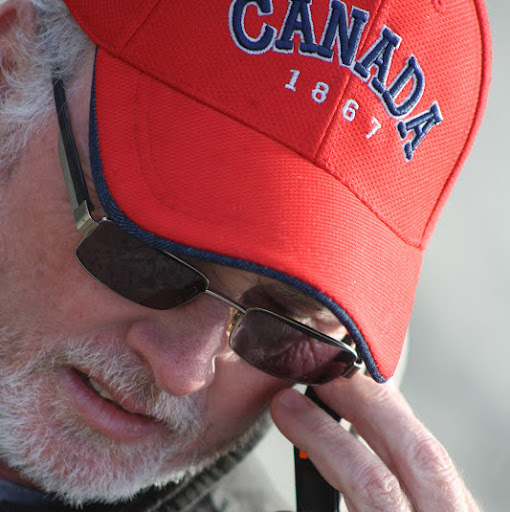Michael J Colburn
age ~54
from Milton, VT
- Also known as:
-
- Mi J Colburn
- Mike J Colburn
Michael Colburn Phones & Addresses
- Milton, VT
- Williston, VT
- Essex Junction, VT
- 12 Milton Falls Ct, Milton, VT 05468
Work
-
Position:Service Occupations
Education
-
School / High School:Northwestern University The Feinberg School Of Medicine1987
Languages
English
Specialities
Vascular Surgery
Medicine Doctors

Dr. Michael D Colburn - MD (Doctor of Medicine)
view sourceSpecialties:
Vascular Surgery
Languages:
English
Education:
Medical School
Northwestern University The Feinberg School Of Medicine
Graduated: 1987
Northwestern University The Feinberg School Of Medicine
Graduated: 1987

Michael D. Colburn
view sourceSpecialties:
Vascular Surgery
Work:
Vascular Center Of North Michigan
3930 Cedar Run Rd, Traverse City, MI 49684
2319350390 (phone), 2319350395 (fax)
3930 Cedar Run Rd, Traverse City, MI 49684
2319350390 (phone), 2319350395 (fax)
Education:
Medical School
Northwestern University Feinberg School of Medicine
Graduated: 1987
Northwestern University Feinberg School of Medicine
Graduated: 1987
Procedures:
Abdominal Aortic Aneurysm
Endarterectomy
Peripheral Vascular Bypass
Varicose Vein Procedures
Aortic Aneurysm Repair
Lower Leg Amputation
Thromboendarterectomy of the Peripheral Arteries
Endarterectomy
Peripheral Vascular Bypass
Varicose Vein Procedures
Aortic Aneurysm Repair
Lower Leg Amputation
Thromboendarterectomy of the Peripheral Arteries
Conditions:
Abdominal Aortic Aneurysm
Arterial Thromboembolic Disease
Varicose Veins
Arterial Thromboembolic Disease
Varicose Veins
Languages:
English
Description:
Dr. Colburn graduated from the Northwestern University Feinberg School of Medicine in 1987. He works in Traverse City, MI and specializes in Vascular Surgery. Dr. Colburn is affiliated with Munson Medical Center.

Michael Duane Colburn
view sourceSpecialties:
Pediatrics
Us Patents
-
Rapid Liquid Heating
view source -
US Patent:7903956, Mar 8, 2011
-
Filed:Aug 17, 2009
-
Appl. No.:12/542539
-
Inventors:Michael George Colburn - Burlington VT, US
Stephen John Bogner - Colchester VT, US -
Assignee:Wood Stone Ideas, LLC - Bellingham WA
-
International Classification:H05B 3/60
-
US Classification:392311, 392312, 392316, 392322
-
Abstract:A device for heating a liquid includes a tank, electrodes, and a conductive liquid. The tank holds the conductive liquid and the electrodes. The electrodes are connected to provide current flowing in the conductive liquid. The device also includes an electrolytic material supply vessel for holding the electrolytic material. The electrolytic material supply vessel is switchably connected for providing the electrolytic material to the tank. The device also includes an electrical parameter sensor for detecting a parameter of electrical energy dissipated in the conductive liquid. The device also includes a controller connected to automatically add the electrolytic material to the conductive liquid if the electrical parameter sensor detects the electrical parameter differing from a set point.
-
Garment Steamer
view source -
US Patent:8464562, Jun 18, 2013
-
Filed:Apr 2, 2012
-
Appl. No.:13/437556
-
Inventors:Michael G. Colburn - Burlington VT, US
David R. McCloskey - Burlington VT, US -
International Classification:D06F 7/00
D06F 75/00 -
US Classification:68222
-
Abstract:An apparatus for steaming a garment comprising an expandable enclosure having a wall circumscribing a hollow space therein, the hollow space accessible through a re-closeable opening in the wall. A clothes hanging element and stretch element contained within the hollow space, the clothes hanging element for holding the garment and the stretch element for stretching the garment. A steam generator connected to provide steam to the hollow space. The steam generator has a water reservoir chamber and a steam chamber with a partition there between. At least one pair of electrodes is arranged within the steam chamber to provide an electric current that resistively heats a source of water to create steam. A water communication port in the partition allows water to pass from the water reservoir chamber to the steam chamber in a manner that self-regulates the amount of steam generated.
-
Recirculating, Self-Contained Ventilation System
view source -
US Patent:8522770, Sep 3, 2013
-
Filed:Aug 26, 2008
-
Appl. No.:12/198599
-
Inventors:Michael G. Colburn - Burlington VT, US
Sarah Doyle Andrews - Winooski VT, US
Iver I. Bjerke - Charlotte VT, US
Lisa Carol Bombardier - Eden VT, US
Stephen John Bogner - Colchester VT, US -
Assignee:SA Vent, LLC - Providence RI
-
International Classification:F24C 15/20
-
US Classification:126299D, 126299 R
-
Abstract:A system includes an intake, an exhaust, and an adjustable directing member. The intake is for taking in air, the exhaust is for exhausting air, and the adjustable directing member is positioned for directing exhaust air toward the intake. Another aspect is a system that includes a source of polluted air and an air cleaning system. The air cleaning system includes an intake, an exhaust, and a directing member. The intake is for taking in polluted air and the exhaust is for exhausting air. The directing member is for directing air from the exhaust toward the intake to provide an air screen for keeping the polluted air in the vicinity of the intake.
-
Food Steamer Containers With Sequential Ohmic Water Heating
view source -
US Patent:8525081, Sep 3, 2013
-
Filed:Aug 17, 2009
-
Appl. No.:12/542604
-
Inventors:Michael George Colburn - Burlington VT, US
Stephen John Bogner - Colchester VT, US
Gavin McCormick - Burlington VT, US -
Assignee:Wood Stone Ideas, LLC - Bellingham WA
-
International Classification:H05B 1/02
-
US Classification:219486, 219432, 219483, 219428, 392313, 392318, 392322
-
Abstract:A liquid heating system includes an electric current controller, a first container, and a second container. The first container includes a first liquid and a first electric heating system. The second container includes a second liquid and a second electric heating system. The electric current controller is connected to the first electric heating system and to the second electric heating system. The electric current controller is configured to automatically alternate between providing electric current to the first electric heating system and to the second electric heating system such that when the electric current controller is providing the current to the first electric heating system the electric current controller provides no electric current to the second electric heating system and when the electric current controller is providing the current to the second electric heating system the electric current controller provides no electric current to the first electric heating system.
-
Steam Generator System
view source -
US Patent:20110266272, Nov 3, 2011
-
Filed:Feb 9, 2011
-
Appl. No.:13/023891
-
Inventors:Michael G. Colburn - Burlington VT, US
Stephen J. Bogner - Colchester VT, US -
International Classification:A21B 1/22
H05B 3/60 -
US Classification:219401, 392322
-
Abstract:A steam generator system for rapidly creating steam by a direct conversion of electrical energy to heat in ionic, water molecules. The system generally includes a supply of water having an ionic content to be received by a heating tank for contacting current-carrying electrodes to produce steam in a continuous, intermittent, or a determinant amount, via a control system. Also possibly included are a water reservoir, filter, pump, check valve, and various optional embodiments of the heating tank. The present invention also permits for controlling the supplied current input to the electrodes by the combination of ionic content added to the water, water level as controlled by the pump, and a phase angle controller and current sensor of an electrical circuit.
-
Mixture Of Graphite And Dielectric Particles For Heat Generation And Exchange Devices
view source -
US Patent:20120138592, Jun 7, 2012
-
Filed:Dec 2, 2011
-
Appl. No.:13/373858
-
Inventors:Michael G. Colburn - Burlington VT, US
Stephen J. Bogner - Colchester VT, US
David R. McCloskey - Burlington VT, US -
International Classification:H05B 1/02
H05B 3/14
H05B 3/60
H05B 1/00
H05B 3/03 -
US Classification:219388, 219552, 219438, 219441, 252502
-
Abstract:The present application is directed to a composition for generating heat from an applied current, comprising a mixture of graphite particles and dielectric particles. The graphite particles have a diameter from 1 to 1500 microns. The dielectric particles have a diameter from 1 to 1500 microns. The mixture has a resistivity from 0.015 ohm-meters to 2.3 megaohm-meters. The mixture is incorporated into heat generation devices and exchange devices. The devices include at least one pair of electrodes disposed within the mixture to direct an applied current through the mixture to resistively heat the mixture.
-
System For Verifying Temperature Measurement
view source -
US Patent:20120140789, Jun 7, 2012
-
Filed:Dec 2, 2011
-
Appl. No.:13/373859
-
Inventors:Michael G. Colburn - Burlington VT, US
Stephen J. Bogner - Colchester VT, US
David R. McCloskey - Burlington VT, US
Gavin McCormick - Burlington VT, US -
International Classification:G01K 15/00
-
US Classification:374 1, 374E15001
-
Abstract:The present application is directed to a system for verifying calibration of a temperature sensor comprising an above-ambient temperature verifier and a below-ambient temperature verifier. The above-ambient temperature verifier includes a first housing containing an ohmic material. At least one pair of electrodes is provided to direct an applied current through the ohmic material to heat the material. A well is provided within the ohmic material for accepting a temperature sensor. A compression assembly cooperates with the ohmic material to create intimate contact with the temperature sensor. An above-ambient reference temperature monitor maintains a calibrated temperature within the ohmic material. The below-ambient temperature verifier includes a second housing and a below-ambient reference temperature monitor to maintain a calibrated temperature of a below-ambient temperature medium. The system further includes the ability to log all temperature test measurements from an RFID tag located on each temperature sensor to be verified.
-
Body Temperature Regulating Garment
view source -
US Patent:20130000874, Jan 3, 2013
-
Filed:Jun 25, 2012
-
Appl. No.:13/532017
-
Inventors:Michael George Colburn - Burlington VT, US
Lissa Catherine Bogner - Colchester VT, US -
International Classification:F28F 7/00
A42B 5/00 -
US Classification:165138, 2207
-
Abstract:A body temperature regulating garment apparatus that removes heat from blood flow then releases the heat to the atmosphere by evaporative cooling lowering the temperature of a body. Heat of the blood is absorbed by a moist superabsorbent material, that in turn is maintained at a temperature cooler than the blood by a removable and condition able thermal pack used to store temperature. The enclosure device used to store the superabsorbent material is formable around the thermal pack and around a separable clothing garment such as a scarf or a bandanna. The scarf or bandanna is used to secure the enclosure device to a body part where gathering forms the enclosure to the body part shape, maximizing contact with the area and secured with a gathering means. The clothing garment can be used for displaying advertising, brands or characters, making it more valuable to providers.
Resumes

Program Specialist At Franchise Tax Board
view sourcePosition:
Program Specialist at California Franchise Tax Board
Location:
Carmel, California
Industry:
Accounting
Work:
California Franchise Tax Board - Sacramento since 1990
Program Specialist
Program Specialist
Education:
California State University-Sacramento 1987 - 1990

Michael Colburn
view sourceLocation:
United States

President At Ideas Well Done
view sourceLocation:
Burlington, Vermont Area
Industry:
Food Production
Name / Title
Company / Classification
Phones & Addresses
Owner
Ideas Well Done
Design · Engineering Services · Industrial Building Construction
Design · Engineering Services · Industrial Building Construction
276 E Allen St - SUITE 5, Winooski, VT 05404
276 E Allen St, Winooski, VT
8026548603, 8778771224, 8026548618
276 E Allen St, Winooski, VT
8026548603, 8778771224, 8026548618
COLBURNTREAT, LLC
Manufacture/Sale Cooking Equipment · Mfg Service Industry Machinery
Manufacture/Sale Cooking Equipment · Mfg Service Industry Machinery
276 E Allen St, Winooski, VT
8026548603
8026548603
Wikipedia References

Michael J. Colburn
License Records
Michael L Colburn
License #:
E031318 - Active
Category:
Emergency medical services
Issued Date:
Mar 3, 2009
Expiration Date:
Jan 31, 2017
Type:
Los Angeles County Sheriff Dept - Reserve Force Bureau
Googleplus

Michael Colburn

Michael Colburn

Michael Colburn

Michael Colburn

Michael Colburn

Michael Colburn

Michael Colburn

Michael Colburn
Classmates

Michael Colburn
view sourceSchools:
Slaughter Elementary School Louisville KY 1985-1989
Community:
Kenneth Martin, Larry Sakai, John Mccarty, Judy Ford, Mark Wager

Michael Colburn
view sourceSchools:
Selkirk Collegiate Inst High School Selkirk Palestinian Territory, Occupie 1987-1990, West Kildonan Collegiate High School Winnipeg Palestinian Territory, Occupie 1988-1992
Community:
Lynn Crossett, Stew Walker, Darlene Williamson

Michael Colburn
view sourceSchools:
Bellevue Christian High School Bellevue WA 1979-1983
Community:
Joseph Greene

Michael Colburn
view sourceSchools:
Univeristy of New Hampshire Durham NH 1977-1981
Community:
Sandra Anthony, Judith Vreeland, Bill Jr, Ellen Puglisi

Michael Colburn
view sourceSchools:
Church Street Elementary School Andalusia AL 1971-1976

West Kildonan Collegiate ...
view sourceGraduates:
Michael Colburn (1988-1992),
Jason James (1984-1988),
Rob Kowbel (1975-1979),
Brenda Carpenter (1975-1979),
Anita Slonina (1996-2000)
Jason James (1984-1988),
Rob Kowbel (1975-1979),
Brenda Carpenter (1975-1979),
Anita Slonina (1996-2000)

Carmel High School, Carme...
view sourceGraduates:
Michael McNall (1965-1969),
Michael Colburn (1972-1976),
Barbara Hudson (1961-1965),
Michael Michael Sanborn (1969-1973)
Michael Colburn (1972-1976),
Barbara Hudson (1961-1965),
Michael Michael Sanborn (1969-1973)

Church Street Elementary ...
view sourceGraduates:
Jamila Couch (1995-2000),
Karen Lawson (1981-1987),
Michael Colburn (1971-1976),
Tarldon Neese (1947-1948),
Tambri Pouncey (1988-1990)
Karen Lawson (1981-1987),
Michael Colburn (1971-1976),
Tarldon Neese (1947-1948),
Tambri Pouncey (1988-1990)

John Michael Colburn
view source
Michael Colburn
view source
Michael Colburn
view source
Michael Colburn
view source
Michael Colburn
view source
Michael Colburn
view source
Michael Colburn
view source
Michael Colburn
view sourceYoutube
Myspace
Get Report for Michael J Colburn from Milton, VT, age ~54









